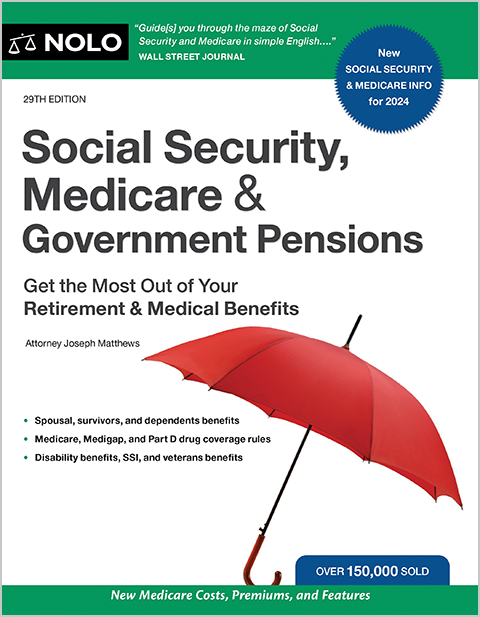Learn how the Americans with Disabilities Act (ADA) protects the rights of deaf and blind people when accessing health information.
While many people may know of the Americans with Disabilities Act (ADA) provisions involving accessibility standards for wheelchair users or reasonable accommodations for disabled employees, fewer are aware that the act requires health care facilities to provide services in a way that doesn't discriminate against people with sensory disabilities.
So whether you're deaf, hard of hearing, blind, or otherwise visually impaired, you're entitled to receive health care information in a manner that you can understand. This means that your medical provider must offer you information in alternative formats (such as braille or audio recordings) to ensure that you have effective communication about your health as required by the ADA.
Why Accessibility Matters for Deaf and Blind People
Everybody has the right to make informed decisions about their health, and an important part of decision making is clear communication. But people with sensory disabilities may struggle to get their medical information in a format that they can understand. Visually impaired people often receive instructions in standard print, for example, which they're unable to read. And people who are deaf might miss an oral question about drug interactions if their doctor doesn't provide them with auxiliary aids.
Access to visual and hearing accommodations affects the quality of life of deaf and blind people in a wide variety of health care matters, including the ability to understand and communicate the following:
- diagnosis and treatment of an illness or disease
- results from lab tests, X-rays, and MRIs
- prescription medication instructions such as dosage and contraindications
- physical therapy instructions
- instructions for the management of chronic conditions like diabetes
- prenatal care and childbirth preparation resources
- educational materials for health care classes
- information about insurance and billing procedure
- security and privacy rights
- surgical risks
- end-of-life procedures, and
- appointment reminders.
When people with visual and hearing impairments aren't provided with the accommodations that they need, they face an uphill battle in making informed medical decisions. As a result, they may receive improper or inadequate care. Some may be denied access to health care altogether. If you're deaf or blind, it's important to know your rights under the ADA so you can get your medical information in an appropriate, accessible method.
ADA Requirements for the Visually and Hearing Impaired
Under the ADA, health care providers must give people with a visual disability or hearing impairment access to the same information as everyone else. They must ensure effective communication between their staff and any patients, visitors, customers, or companions with a sensory disability. This is typically accomplished by offering the information in alternative formats or providing auxiliary aids tailored to the needs of blind, deaf, or similarly impaired individuals.
What Medical Providers Are Covered by the ADA?
The ADA prevents medical providers from excluding, denying services, segregating, or otherwise treating differently anybody with a visual or hearing disability. This applies to all basic health care facility programs and services, whether inpatient or outpatient, including:
- hospitals
- emergency care
- private doctors' offices
- health clinics
- diagnostic centers
- physical therapy centers
- mental health providers, and
- nursing homes.
It doesn't matter whether the facility is administered by a state or local government or is privately owned and operated. Even if the provider's office is located in a private home, the ADA still applies to the part of the home used for public purposes. The law also covers educational classes and non-medical services or settings, such as cafeteria and gift shop services.
What Standards Must Providers Meet to Comply With the ADA?
In order to meet ADA requirements, health care providers must furnish the alternative accessible formats in a timely manner and in such a way as to protect the privacy and independence of the disabled patient. Providers get to make the ultimate decision about what format to offer, but only if it actually results in effective communication. Ideally, your medical provider will consult with you to determine how to ensure effective communication.
Accommodations for Blindness and Low Vision Under the ADA
Blind or visually impaired people have several options for accessibility accommodations available to them under the ADA. The most common alternative formats used to provide information for people with vision problems include tactile writing systems (such as braille), large print, and screen readers. For example, any software that your doctor uses to organize your progress notes should be compatible with a screen reader, if you use one.
Often, the best way for medical providers to comply with ADA accessibility for visually impaired people is just asking how they can help and following through with any requested accommodations. A seemingly simple gesture, such as a doctor announcing when they enter the room of a blind patient, can go a long way towards ensuring effective health care communication.
ADA Accommodations for Those Who Are Deaf or Hard of Hearing
As with vision impairments, the ADA requires medical providers to ensure effective communication with people who are deaf or hard of hearing. Common auxiliary aids that meet this requirement include real-time captioning, note takers, written materials, and qualified interpreters (sign language, cued speech, or tactile).
Qualified interpreters don't need official certification. However, they must be able to interpret "effectively, accurately, and impartially, both receptively and expressively" for the specific hearing impaired individual in question. The interpreter must also be able to translate spoken language into the form of manual communication used by the person who is hard of hearing.
So a deaf patient who communicates using American Sign Language (ASL) will need an interpreter that is sufficiently fluent in ASL, but the same ASL interpreter may not be qualified to communicate with a patient who only uses Signed English, which has different grammar and syntax rules than ASL.
Generally, anybody who has only a basic knowledge of sign language won't be considered a qualified interpreter. For relatively complicated interactions—such as discussions regarding treatment—a qualified sign language interpreter may be the only way to ensure effective communication.
But an interpreter may not be necessary for every exchange. Gestures such as pointing to an object may be sufficient under the ADA for actions like selecting an item for purchase in the hospital cafeteria. Written notes might be enough to direct a deaf visitor to a particular room in the facility or for other simple communications. Somebody who grew up using ASL as their first language may have some difficulty reading and writing, however. In that case, written notes would not be considered effective communication for ADA compliance purposes.
What Happens When Providers Don't Comply With Your Rights Under the ADA?
Unfortunately, in spite of the protections afforded by the ADA, the reality is that many people with visual or disabilities still face barriers in accessing routine health care services and information. For example, a 2024 study by the National Institutes of Health showed that three widely used electronic health record systems demonstrated room for improvement with regard to accessibility, particularly in the areas of keyboard navigation and screen reader compatibility.
But the ADA is a civil rights law, and knowing your rights is an important step towards removing these access barriers. While violations of the law often occur out of ignorance, rather than malice, that doesn't mean you have to accept them. Here are few points to keep in mind the next time you're faced with discriminatory health care practices:
- Medical providers can't require you to bring somebody else with you in order to interpret or facilitate communication, nor can they rely on your companion to interpret or facilitate communication.
- ADA protections extend to everybody in a health care setting, not just patients. If you're hard of hearing and you're accompanying your spouse to prenatal birth classes, for example, you're entitled to the same access to class content as the hearing individuals.
- If communication isn't effective for you, it's not effective under the ADA. This includes being asked to reveal personal information with a qualified interpreter in a public area such as a waiting room or doctor's lobby.
- Accommodations must be free. Health care providers are not permitted to charge a person with a hearing disability for the costs of communication aids and services.
If you believe that your health care provider hasn't taken adequate steps to ensure effective communication, you can file a complaint with the Department of Justice, Civil Rights Division. For more information about your rights as a blind or deaf person under the ADA, see our articles on the rules for service animals in a public setting and reasonable accommodations at work.

